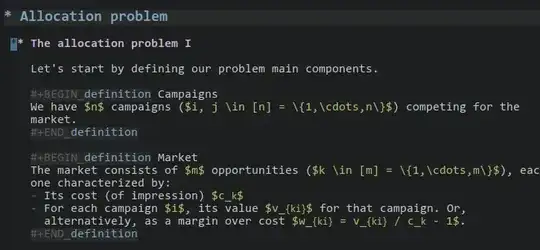I want to use org to make a Beamer slide like this:
--------------------------------
| |
| some text |
| |
| -------------------- |
| | code | |
| -------------------- |
| |
| more text |
| |
--------------------------------
But if I attempt this in org-mode, like the following:
* More Complex Example
some text
*** library.py :B_block:
#+begin_src python
code
#+end_src
more text
...the output looks like this:
--------------------------------
| |
| some text |
| |
| -------------------- |
| | code | |
| | more text | |
| -------------------- |
| |
| |
--------------------------------
How do I put more text on the same slide, but outside of the code block?
